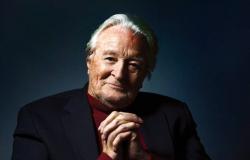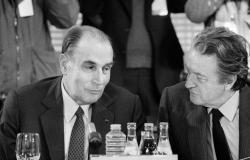Millions are celebrating Canada’s 157th birthday this year — as they do every year — with fireworks, food and family. In Newfoundlandand Labrador, it is a day of mourning for one of the bloodiest battles of the First World War.
Some call it emotional whiplash – a heavy burden of history the province has learned to carry for decades.
This year, the province will mark the day with a ceremony for the recently repatriated Unknown Soldier, who will stand for the hundreds of men who died during the war and do not have tombs of their own.
‘You could smell the blood’
The province of Newfoundland and Labrador we know today was a country of its own back then. It wouldn’t join confederation until 1949, 82 years after Canada officially became a country.
The Dominion of Newfoundland – as it was called at the time – had some 800 men fight on the fields of Beaumont Hamel, in France, on July 1, 1916.
In just over half an hour of battle, 324 soldiers died and 386 were wounded. The next day, only 68 answered the roll call.
“One fellow who was there that day said you could smell the blood,” said military historian Frank Gogos, who has spent his life researching Newfoundland and Labrador’s contribution to The Great War.
“There was no battle. It was just a massacre. Thirty minutes.”
Left: St. John’s Road, a support trench in Beaumont Hamel in France, is seen before the start of fighting on July 1, 1916. Right: An enemy shell explodes some distance away. (Images courtesy of The Rooms Provincial Archives Division)
That morning, an entire generation of Newfoundland and Labrador men was killed by the Germans.
“They saw what happened to the battalions that advanced before them … Their commanding officer comes along and says, ‘Yeah, we’re going to attack,’” Gogos explained.
“I don’t think it’s an exaggeration to think that not one man who got up that day didn’t think they were going to be dead by the end of it,” he continued. “It was an order. They had to do it. But there was also a sense of pride that you were not going to let your buddies down.”
Gogos says documents from the day reveal one of the soldiers compared the march to the battlefield to a walk through a blizzard, “because Newfoundlanders instinctively dropped their chin down and walk forward. And this is kind of what the soldiers were doing to protect themselves.”
Except it wasn’t snow soldiers were walking into. It was gunfire.
A special honour
An unidentified soldier from Newfoundland and Labrador who died on the battlefield at Beaumont Hamel was buried in an unmarked grave in France. He was then repatriated to Canada in a transfer ceremony in May. On July 1, he will be honoured at home in a special ceremony held more than a century after he crossed to Atlantic to fight in the war.
The soldier’s remains will be placed in a specially constructed Tomb of the Unknown Soldier as part of Newfoundland’s National War Memorial’s 100th anniversary in St. John’s. A 3,600-kilogram sarcophagus was installed at the base of the war memorial in April. Etched on the vault, which is carved from black granite from a Quebec quarry, are the words “Known Unto God” in English and French, together with a forget-me-not flower, a symbol of remembrance for the Newfoundland Regiment. The cover is made from Labrador granite called “Blue Eyes,” and weighs about 1,100 kilograms.
Outside Ottawa, Newfoundland and Labrador is the only province to have a National War Memorial and Tomb of the Unknown Soldier.
Trenches remain at the preserved Beaumont Hamel battlefield, in France.
Why is the Unknown Soldier still unknown?
This is a fairly common question – especially when you consider advancements in DNA technology, and the answer is fairly simple.
“The basic answer is because he is the unknown warrior, so he needs to represent all the others,” explains Stephan Naji, Head of the Recovery Unit with the Commonwealth War Graves Commission.
“We want the warrior to remain unknown because otherwise, it defeats the purpose of symbolizing all the fallen.”
In other words, in this case, the most detailed investigation was purposely not carried out.
Sarah Lockyer is a forensic anthropologist with the Canadian Armed Forces.
Sarah Lockyer, a forensic anthropologist with the Canadian Armed Forces who worked on exhuming the remains in Beaumont Hamel, has mixed emotions about the process.
“It’s been a little conflicting. I cannot identify this person,” she said. “The whole purpose of the field of forensic anthropology is to return an identity and a face in an individual.”
“It is what it is, and (it) is what the nation and the government of Newfoundland (and Labrador) agreed to, and (what) the Commonwealth War Graves agreed to.”
But Lockyer has been involved in other discoveries where she has been able to identify the soldier.
“This work changes history, it changes Canada’s history…We know who this is. He gets talked about. He gets his time in the limelight.”
Across former battlefields in Northern France, there are many more still missing. Some of them will be discovered by farmers surveying their lands – former battlefields.
The First Newfoundland Regiment is pictured in in Fort George, Scotland, in 1915. (Image taken by D. A. Grant / The Rooms Provincial Archives Division)
And when they do, they know to call the police or the Recovery Unit, which typically responds within two hours to prevent looters from accessing the sites.
Looters collect and sometimes sell these artifacts, which often include cap badges or even military equipment.
Lockyer described looting remains as “killing that soldier all over again,” because “it removes any chances of being able to identify that person.”
Into the arms of home
In Newfoundland and Labrador, history is remembered in lore and song. The province’s best-known troubadour, Alan Doyle co-wrote with Cory Tetford “Into the Arms of Home” after he was inspired by a visit to Beaumont Hamel himself.
“I think I was expecting there would be a castle or a palace or something huge that everyone died for. And I got there and the first thing I noticed was like, this is just a meadow. And that’s … the origin of the lyric of that first verse of the song,” he told me.
Alan Doyle is a renown Newfoundland-born singer and songwriter. He is also a founding member of Canadian folk rock band Great Big Sea.
“Until I got there and saw all those names, I don’t think it ever struck me that these were real people,” he said. “Young men … with names like mine and names like my neighbours.”
“The human cost of it, just really struck home”
Little did Doyle know his lyrics would foreshadow a long-awaited return for an Unknown Soldier this year, on his final journey home.
Sing me a song when the fields are in flower
And I’ll never lie here alone
Love will bring me across the water
Into the arms of home
Into the arms of home






